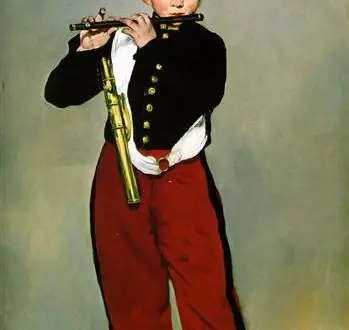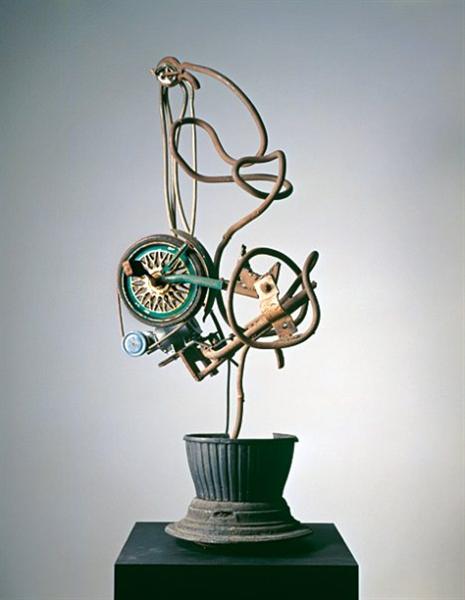Title of Artwork: “The Fifer”

Artwork by Edouard Manet
Year Created 1866
Summary of The Fifer
French artist Édouard Manet painted The Fifer or Young Flautist in 1866. On loan to the Louvre Abu Dhabi museum in the United Arab Emirates from the Musée d’Orsay, Paris, it is currently on display.
All About The Fifer
Manet discovered Diego Velázquez’s work at the Prado during a trip to Spain in 1865. While in Paris in 1866, he began work on a new painting depicting an unidentified fifer in the Spanish army. Against a flattened, neutral background, Manet presents the uniformed boy in an imitation and inversion of Vélazquez’s court portrait formula, frustrating attempts to gauge the figure’s true size and significance.
The jury at the Salon of 1866 turned down the painting, entitled Le fifre. French writer Émile Zola, a longtime admirer of Manet’s work, published a series of articles in L’Évenement newspaper in which Zola extolled the artist’s realism and modern content. Like Gustave Courbet, Manet put on an exhibition of his own work at the Exposition Universelle in May 1867, paying for it all out of his own pocket. Popular press ridiculed Le fifre for its unusual brushwork and incomprehensible space setting.
In 1872 and 1893, Durand-Ruell purchased the painting. It was owned by Jean-Baptiste Faure, a composer and baritone, from 1873 to 1893. The Count Isaac de Camondo estate’s last private owner, the French government, accepted the fifre as payment in lieu of taxes, and it was added to the country’s national collections in 1911. When it moved to the Musée du Jeu de Paume from the Louvre in 1947, it had been there since 1914. To this day, it is housed in the National Museum of 19th-Century Art at the Musée d’Orsay.
After his premature death in 1884, it was included in a large exhibition of Manet’s work, as well as an exhibition of his work at the Grand Palais on the 100th anniversary of his death.
With a shallow depth, as depicted by the Spanish painter Manet, vertical and horizontal planes are barely discernible in this painting “the decorative effect of a large single figures, with emphatic contours and placed before a background surface.” is what Peter H. Feist says Manet was drawn to in The Player Fife. Using a limited palette of colours, the impasto technique dominates: the black jacket and shoes, red pants, white strap, etc. are all highlighted before the monochrome background. To put it another way, this person is “firm, smooth and alive.”
Like Velázquez’s work, Manet depicted an anonymous character, a young musician from Napoleon III’s Imperial Guard band who was sent to the painter by his superior, Lejosne, and who was “treated like a grandee of Spain.” Both Léon Leenhoff and Victorine Meurent have been spotted in the boy’s face and body, so additional models may have been used.
Information Citations
En.wikipedia.org, https://en.wikipedia.org/.
























